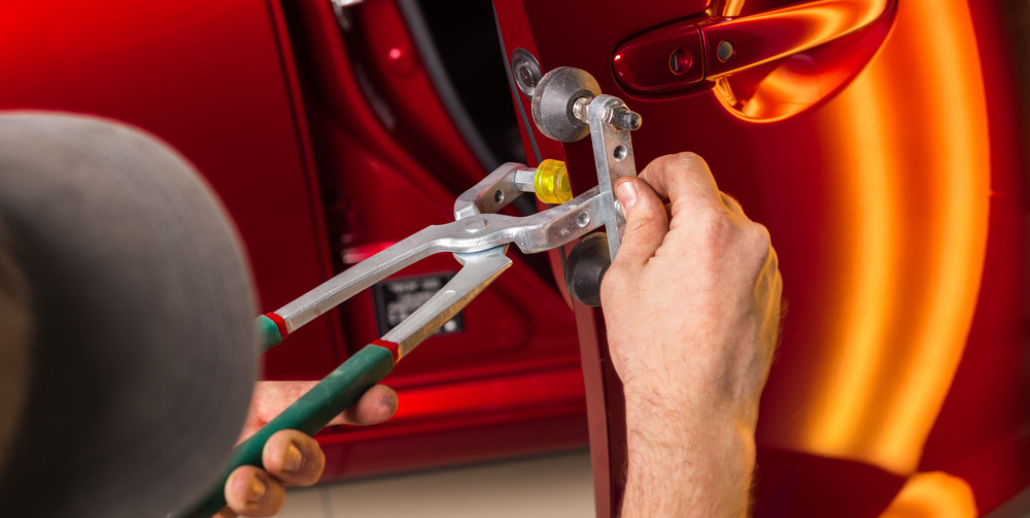Paintless Dent Removal vs. Traditional Dent Removal

Paintless dent repair (PDR) fixes dents without repainting your vehicle. This method keeps the original factory finish intact, which many car owners prefer. PDR works well for dents from hail, minor accidents, door dings, and parking lot mishaps. visit website
How Does Paintless Dent Repair Work?
PDR uses specialized tools to gently push and massage the dented area from behind the panel. Technicians access the back of the dent through existing openings, like door panels or the trunk, or by removing inner panels if needed.
Advantages of Paintless Dent Repair
- Preserves Original Paint: PDR doesn’t damage your vehicle’s paint, so the factory finish remains unchanged. This helps preserve the vehicle’s resale value.
- Faster Repairs: PDR is quicker than traditional methods. Most repairs can be completed in a few hours, depending on the dent’s severity, which means less time without your vehicle.
- Cost-Effective: Without the need for repainting or extensive labor, PDR is generally more affordable. This saves on labor and material costs, making it a budget-friendly choice.
What is Traditional Dent Removal?
Traditional dent removal, or conventional dent repair, uses body filler and paint to fix dents. It’s suitable for a wide range of dents.
How Does Traditional Dent Removal Work?
Technicians apply body filler to the dented area, shape it to match the vehicle’s contours, and then sand, prime, and paint the area to achieve a smooth finish. This process requires skill to ensure the repaired area blends well with the rest of the vehicle.
Advantages of Traditional Dent Removal
- Suitable for Severe Dents: This method can handle larger or more complex dents, including those with paint damage or deep creases.
- Versatility: Traditional dent removal works for various types of dents, whether from collisions, parking lot mishaps, or other accidents.
- Long-Lasting Repairs: The extensive process, including painting, ensures a durable repair. When done correctly, the repaired area blends seamlessly with the rest of the vehicle.
Things to Think About When Choosing the Best Method
- Dent Severity: PDR is best for minor dents where the paint is intact, such as those from hail or small accidents. Traditional dent removal is better for severe dents or those with paint damage.
- Paint Damage: If the dent has damaged the paint or caused chips, traditional dent removal is needed to ensure a smooth repair. PDR cannot fix paint damage.
- Time and Cost: PDR usually takes less time and is often cheaper since it doesn’t require repainting. Traditional dent removal might take longer and cost more due to the need for painting.
Reasons to Opt for Paintless Dent Repair for Hail Damage
Hail damage can make your vehicle look unsightly and reduce its value. PDR is a popular choice for fixing hail damage because it effectively restores the vehicle’s original shape without affecting the paint. This method is fast and efficient, often completing repairs in an hour or less. Some technicians even offer same-day service, saving time and money compared to traditional repair methods.
